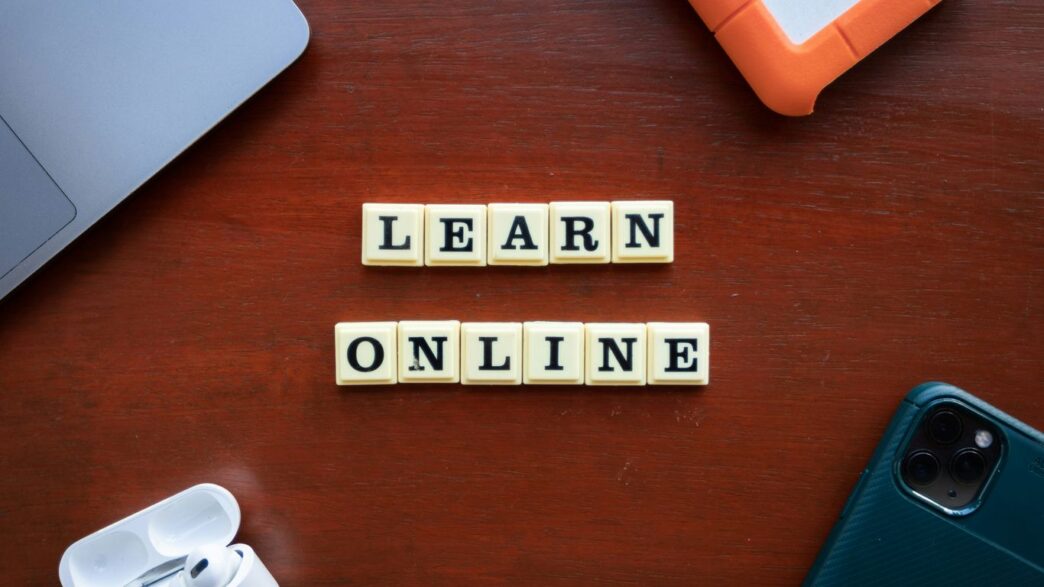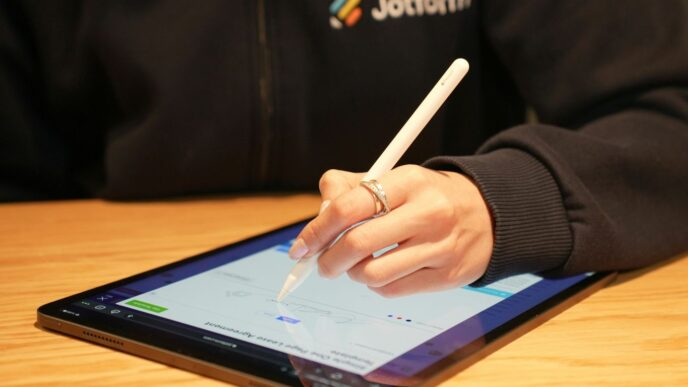So, you’re thinking about getting that HubSpot Inbound Marketing Certification? It’s a pretty common goal for folks in marketing these days. It basically means you know how to bring people to your business online without being pushy. This guide is here to break down what it’s all about, how to pass the test, and what to do once you’ve got that shiny new badge. We’ll cover the basics, some study tips, and why it’s even worth your time. Let’s get into it.
Key Takeaways
- The HubSpot Inbound Marketing Certification proves you understand how to attract, engage, and satisfy customers using inbound strategies.
- The exam covers core inbound concepts like buyer personas, content creation, SEO, social media, and marketing automation.
- HubSpot provides free educational resources, including videos and quizzes, to help you prepare for the certification.
- To pass, you need to complete the course, score at least 80% on assessments, and sometimes complete a practical exercise.
- Earning the certification can boost your resume, open doors to new job opportunities, and help you connect with a community of inbound marketers.
Understanding the HubSpot Inbound Marketing Certification
What is the HubSpot Inbound Marketing Certification?
So, what exactly is this HubSpot Inbound Marketing Certification all about? Think of it as a formal nod from HubSpot itself, saying you’ve got the skills to bring people to your business using smart, helpful marketing. It’s not about shouting at people; it’s about drawing them in with content they actually want and need. HubSpot Academy, which is totally free to use, offers this certification. It’s a way to show you understand how to attract, engage, and keep customers happy by being genuinely useful.
Key Benefits of Earning the Certification
Getting this certification is more than just adding a line to your resume. It’s a real signal to employers or clients that you know how to make inbound marketing work. You’ll learn practical ways to get people interested in what you offer, turn those interested folks into leads, and then turn those leads into happy, paying customers. Plus, having that official HubSpot badge on your LinkedIn profile can really make you stand out in a crowded job market. It shows you’re serious about inbound and have the knowledge to back it up.
HubSpot Inbound Marketing Certification vs. Other HubSpot Courses
HubSpot offers a bunch of different courses and certifications, and it can be a bit confusing to figure out which one is right for you. The Inbound Marketing Certification is specifically focused on the entire inbound methodology – from attracting strangers to delighting customers. Other courses might zoom in on specific areas, like just sales, or just how to use certain tools. This particular certification gives you a broad view of how all the inbound pieces fit together to help a business grow. It’s the foundational one if you want to get a solid grasp of the whole inbound game.
Navigating the Inbound Marketing Certification Exam
So, you’ve gone through the HubSpot Inbound Marketing course material. Now it’s time to face the exam. Don’t sweat it too much; understanding the test’s structure and what it’s looking for can make a big difference. It’s not just about memorizing facts; it’s about showing you can actually use these inbound marketing ideas.
Exam Format and Structure
The exam itself is pretty straightforward in its setup. You’ll be looking at a set of multiple-choice questions. HubSpot usually gives you a decent amount of time to complete it, often around 3 hours for about 60 questions. This gives you space to think through your answers without feeling rushed off your feet. The key is to pace yourself and not get stuck on any single question for too long.
Core Topics Covered in the Exam
What exactly will they ask you about? Well, it all circles back to the inbound methodology. Expect questions that cover:
- Inbound Fundamentals: This is the bedrock – understanding what inbound marketing is all about, how it differs from traditional methods, and its core principles.
- Content and SEO: How to create content that people actually want to find, and how to make sure search engines can see it.
- Social Media Promotion: Using social platforms not just to post, but to genuinely connect and drive interest.
- Lead Conversion: Turning website visitors into actual leads, and then nurturing those leads.
- Analysis and Reporting: How to measure if your inbound efforts are working and what to do if they aren’t.
What to Expect on the Certification Test
Beyond just knowing the definitions, the test likes to see if you can apply what you’ve learned. This means you’ll likely encounter scenario-based questions. They might present you with a marketing situation and ask you to choose the best inbound approach. It’s less about recalling a specific date and more about thinking, "Okay, if this is the problem, what’s the inbound solution here?" They want to see your practical thinking, not just your memory.
Strategies for Mastering the Certification Exam
So, you’re aiming to conquer the HubSpot Inbound Marketing Certification exam? That’s awesome! It’s not just about memorizing facts; it’s about really getting how inbound marketing works. Luckily, HubSpot gives you a ton of tools to help you out. The key is to use these resources smartly and build good study habits.
Leveraging HubSpot’s Educational Resources
HubSpot has put together a whole library of stuff to get you ready. Think of their Academy as your personal tutor. They’ve got videos, blog posts, and guides that break down everything you need to know. It’s like getting the answers straight from the source, which is pretty handy. Don’t just watch the videos; take notes. Jot down important terms, examples, and anything that seems a bit fuzzy. You can also find transcripts for the videos, which are great for reviewing later or if you missed something.
Effective Study Habits for Certification Success
Getting ready for a test like this takes more than just a quick glance. You’ve got to be consistent. Try to set aside specific times each week to study. It’s better to study for an hour a few times a week than to try and cram everything in the night before. This helps your brain actually remember the information. Also, don’t just stick to one type of learning. If you’re a visual person, the videos will be your best friend. If you like reading, dive into the blog posts and guides. And definitely don’t skip the quizzes after each lesson – they’re like mini-checkpoints to see if you’re on the right track. Aim for at least 80% on those to make sure you’re really grasping the material.
Tips for Tackling Tricky Exam Questions
When you get to the actual exam, remember it’s not just about knowing definitions. You’ll likely see questions that put you in a real-world scenario and ask what you’d do. This is where applying what you’ve learned comes in. If you get stuck on a question, don’t panic and waste all your time. HubSpot gives you a good chunk of time – usually 3 hours for about 60 questions – so use it wisely. Mark the tough ones and come back to them later. You might find that answering other questions jogs your memory or gives you a clue. It’s also a good idea to do some practice tests that mimic the real exam. This helps you get used to the pressure and figure out your pacing. If you’ve been working with HubSpot’s tools, even better – try to apply what you’re learning to a real or practice campaign. That hands-on experience is gold.
Key Concepts for Inbound Marketing Mastery

Alright, so you’re aiming to really get inbound marketing down, huh? It’s not just about throwing content out there and hoping for the best. HubSpot breaks it down into a pretty clear process, and understanding these core ideas is what separates the folks who just dabble from those who actually see results.
The Inbound Methodology Stages: Attract, Convert, Close, Delight
Think of inbound marketing like building relationships. You don’t just walk up to someone and ask them to marry you, right? It’s a process. HubSpot has this neat way of looking at it, broken down into four main parts. It’s all about guiding people from being strangers to becoming happy, repeat customers.
- Attract: This is where you get people’s attention. You’re not interrupting them; you’re drawing them in with helpful stuff they’re actually looking for. Think blog posts, social media updates, or videos that answer questions. The goal is to become a go-to resource. This is where you start to build your audience.
- Convert: Once you’ve got their attention, you want to turn those visitors into leads. This means getting their contact information, usually by offering something valuable in return, like an ebook, a webinar, or a template. You’re making it easy for them to take the next step.
- Close: Now you have a lead, and the aim is to turn them into a customer. This involves nurturing that relationship, often with targeted emails or sales conversations, to show them how your product or service can solve their specific problem.
- Delight: This is the stage that often gets overlooked, but it’s super important. It’s about keeping your customers happy after they buy. Providing great customer service, offering support, and continuing to provide value makes them want to stick around and even recommend you to others. Happy customers can become your best marketers.
Understanding and Creating Buyer Personas
Who are you even talking to? That’s the big question. You can’t create content or offers that hit the mark if you don’t know who your ideal customer is. That’s where buyer personas come in. They’re not just random demographics; they’re semi-fictional representations of your ideal customers based on research and real data about your existing customers.
Creating a persona involves digging into:
- Demographics: Age, location, job title, income.
- Goals and Challenges: What are they trying to achieve? What’s holding them back?
- Information Sources: Where do they go to find information? What social media do they use? What blogs do they read?
- Common Objections: What might stop them from buying from you?
Knowing these details helps you tailor your messaging, choose the right channels, and create content that truly speaks to their needs. It makes your marketing efforts way more effective.
The Role of Marketing Automation and AI
Let’s be real, doing all this manually for every single person would be a nightmare. That’s where marketing automation and artificial intelligence (AI) come into play. They’re like your trusty sidekicks, helping you scale your efforts without losing that personal touch.
- Marketing Automation: This is about using software to automate repetitive marketing tasks. Think sending out welcome emails to new subscribers, segmenting your email lists based on behavior, or scheduling social media posts. It frees up your time to focus on strategy and creativity.
- Artificial Intelligence (AI): AI takes automation a step further. It can analyze vast amounts of data to predict customer behavior, personalize content recommendations, optimize ad spend, and even power chatbots for instant customer support. AI helps you work smarter, not just harder.
Together, these tools allow you to deliver the right message to the right person at the right time, making your inbound marketing efforts much more efficient and impactful.
Preparing for the HubSpot Inbound Marketing Certification Exam
Alright, so you’re ready to tackle the HubSpot Inbound Marketing Certification exam. It’s not just about knowing the terms; it’s about showing you can actually do inbound marketing. Think of it like getting ready for a big test in school, but way more practical for your career. You’ve got to put in the work to make sure you’re set up for success.
Course Completion Requirements
First things first, you can’t just jump into the final exam. HubSpot wants to see that you’ve gone through the material. This means finishing all the lessons in the Inbound Marketing Certification course. Each chapter has videos and quizzes, and you need to pass those little chapter tests with at least an 80% score to move on. It’s like collecting badges as you go. You have a 30-day window to complete each chapter’s test after you start it, so don’t wait too long between sessions. Completing the course is the main hurdle before you can even think about the big exam.
Practical Application and Hands-On Practice
Just watching videos and taking quizzes isn’t quite enough. The exam often throws scenario-based questions at you. They want to know if you can take what you learned and apply it to a real-world marketing situation. So, try to think about how these concepts would work for a business you know, or even your own. If you’re already working in marketing, try to connect the course material to projects you’re currently involved in. This makes the learning stick way better than just memorizing definitions. It’s like practicing a sport – you can read about it all day, but you won’t get good until you actually get out there and play.
Exam Day Preparation and Time Management
When exam day rolls around, you’ll have about 3 hours to answer 60 multiple-choice questions. That’s a decent amount of time, but you don’t want to get bogged down on any single question. Before you start, make sure you have a stable internet connection and a quiet place to focus. It’s a good idea to do a practice test under timed conditions beforehand. This helps you get a feel for the pace and identify any areas where you tend to spend too much time. If you find yourself stuck on a question, don’t panic. Make your best guess, flag it if you can, and move on. You can always come back to it later if time permits. The goal is to get through all the questions and give yourself the best chance to answer them thoughtfully.
Post-Certification: Next Steps and Opportunities
So, you’ve done it! You’ve passed the HubSpot Inbound Marketing Certification exam. That’s a pretty big deal, honestly. It means you’ve got a solid grasp on how to attract, engage, and satisfy customers using inbound strategies. But what now? This certification isn’t just a shiny badge; it’s a stepping stone. It’s time to put what you’ve learned into action and see where it takes you.
Applying Your Newfound Inbound Marketing Skills
Think of your certification as a green light to start doing more inbound marketing. If you’re already working in marketing, this is your chance to suggest new campaigns or take on projects that use these skills. Maybe you can help your team set up better lead nurturing workflows or improve your website’s content to draw in more visitors. If you’re looking for a job, having this certification on your resume makes you stand out. It tells potential employers you’ve been trained by the best and know how to get results. You can even start applying for roles specifically looking for inbound marketing talent.
Enhancing Your Professional Profile
Don’t just let that certificate sit in a digital folder. Update your LinkedIn profile immediately! Add it to your certifications section. This is a great way to let your network know about your new skills and can open doors to conversations with other professionals. It’s also a good time to connect with people who have also completed the certification. You might find some great advice or even potential collaborators. Remember, being part of the HubSpot community means you’re not alone; there are thousands of others who have gone through this, and many are happy to share their experiences. You can even check out the HubSpot StudentSpot community if you’re looking to connect with peers.
Continuing Your Inbound Marketing Education
Getting certified in inbound marketing is a fantastic achievement, but the world of digital marketing doesn’t stand still. It’s always changing. So, what’s next? Keep learning! HubSpot offers a bunch of other courses and certifications that build on this one. You could look into content marketing, email marketing, or even sales enablement. The more you know, the more you can do. Plus, staying updated with industry blogs, podcasts, and webinars will keep your skills sharp and your strategies effective. It’s a journey, not a destination, and the learning never really stops.
Wrapping It Up
So, you’ve gone through the ins and outs of the HubSpot Inbound Marketing Certification. It’s more than just a piece of paper; it’s a solid way to show you know how to bring people to a business using smart, helpful marketing. Remember, the digital world keeps changing, so don’t stop learning. Use what you’ve picked up, keep practicing, and stay curious. This certification is a great start, but the real magic happens when you put it all into action. Go ahead, get that badge, and start making some inbound marketing noise!
Frequently Asked Questions
What exactly is the HubSpot Inbound Marketing Certification?
Think of it like a special badge you earn that shows you’re really good at attracting people to a business online, keeping them interested, and turning them into happy customers. HubSpot, a company that helps with online marketing, offers this as a free course and test.
Why should I bother getting this certification?
Getting this certification is like giving your resume a superpower! It proves to bosses or clients that you know how to use smart online marketing tricks. Plus, you learn from the best in the business, which can help you get better jobs or grow your own business.
What kind of stuff will I be tested on?
The test covers how to bring people in (attract), get them to take action (convert), make them loyal customers (close), and keep them super happy (delight). You’ll also learn about creating things people want to read or watch, using social media well, and understanding who your ideal customer is.
How should I study for the exam?
HubSpot gives you tons of free videos and lessons. Watch them closely and take notes! After each part, try the little quizzes. It’s also super helpful to actually use HubSpot’s tools if you can, and maybe join online groups to talk with others who are also studying.
What’s the exam like, and how long do I have?
The exam is usually made up of multiple-choice questions. You typically have about 3 hours to answer around 60 questions. Don’t panic if a question seems tough; you can skip it and come back later. Just make sure you manage your time well!
What happens after I get certified?
Congrats! Now you can use your new skills to find jobs or projects that need inbound marketing experts. Update your online profiles like LinkedIn to show off your achievement. And don’t stop learning – HubSpot has other courses, and the world of online marketing is always changing!














